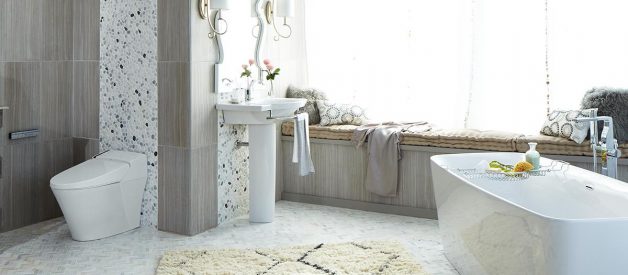(BPT) – Is it ever too early to think about aging in place, and making home improvements that will allow you to remain living in the same house well into your golden years? Homeowners in their 60s and 70s are no longer the only Americans investing thought and money into preparing their homes to meet their needs as they grow older – and that’s good news, according to HomeAdvisor’s 2016 Aging-in-Place report.
‘If homeowners start early, they can spend sufficient time researching and planning to avoid wasted time and suboptimal solutions,’ Brad Hunter, HomeAdvisor’s chief economist, says in the report. ‘Homeowners can protect, and possibly even raise, resale value of the home by making (it) more appealing to buyers in all age groups with modifications that have broad appeal.’
The report notes universal design improvements, such as wider doorways and open floor plans, ‘can enhance the quality of life in a home even as they make the home safer … and can be just as beneficial to a homeowner in their 30s or 40s as they are to a homeowner in their 70s or 80s.’
Universally beneficial upgrades
Incorporating universal design principles into your home can facilitate aging-in-place goals, while comfortably addressing the diverse needs of all ages and mobility levels using your home. Features like single-story design, bedrooms and bathrooms on the ground floor, daylighting through larger windows and skylights, and wider doors and hallways appeal to users of all ages.
However, if you’re considering aging-in-place upgrades, making improvements in the bathroom can deliver the greatest return on your investment. The bathroom is often referred to as the most dangerous room in the home for all ages, but especially for seniors with increased risk of falling in showers or bathtubs, or around the toilet area.
Upgrades to improve a bathroom’s usability and safety can help people remain in their homes for longer. Here are bathroom improvements to consider:
* Replace a step-in bathtub with a walk-in option – Falls send thousands of older people to the emergency room each year, according to the Centers for Disease Control and Prevention. For those with mobility issues and muscle weakness, lifting their legs to step into or out of a bathtub can be a fall risk. Tub manufacturers offer a range of solutions with walk-in bathtubs designed to provide enjoyable bathing with safer accessibility. For example, the American Standard walk-in bathtub includes an outward opening door for easier access, molded seating for added comfort, and convenient grab bars for security. Plus, it offers a Quick Drain feature that removes water from the tub in less than two minutes, preventing the user from getting chilled sitting in the draining water.
* Shower seating – Showers also present a fall risk that affect people of all ages. Adding seating in a shower – whether a removable chair or bench, or built-in options – can allow you to relax in the shower with less fear of falling.
* Chair-height toilets – Standard toilets have a bowl height of about 14 to 15 inches. Toilets with higher bowls at 16 1/2 inches, similar to the familiar height of a chair, make it easier for everyone to stand up without a lot of effort. Water-conserving models like the American Standard VorMax high-efficiency Right Height elongated toilet are not only more comfortable, but they also facilitate cleanliness with powerful flushing action and technology that keeps the bowl cleaner. Toilets with built-in bidets are another smart option for those with dexterity and mobility issues, making it easier for them to maintain personal cleanliness without daily bathing.
* Pedestal sinks – Standard sinks are about 30 inches high. Installing a higher sink to reduce the amount of bending a user needs to do is another worthwhile bathroom improvement. While you can find vanity sinks set at a higher level, pedestal sinks of about 36 inches high have even more advantages. The slimmer, sleeker profile of a pedestal provides more maneuverable floor space for people with mobility issues or those using wheelchairs or walkers. Plus, the reduced footprint makes floor-cleaning easier.
* Easy-to-use faucets – Twist faucets can be difficult to manage for people with arthritis or decreased flexibility, as well as for small children just learning to use the facilities. Lever-style or single-handle faucets make controlling the water flow much easier for people of all ages and with varying skill levels.
Universal design home improvements can benefit all ages within your home. Making these upgrades at a younger age can prepare your home to meet your needs in your golden years, while allowing you to enjoy the comforts early on.
